How To Make Team Bonding Activities Purposeful and Effective

There’s a lot of emphasis in today’s world on ensuring we create and maintain a cohesive team environment. We hear that having strong bonds within our team improves productivity and efficiency, as well as increases an individual’s job satisfaction levels, but how do we get to that point?
An effective way to foster this sense of unity is through purposeful and well-planned team bonding activities. However, the key lies not just in organising these activities, but in ensuring they serve a clear purpose and align with the goals of the team. Additionally, fostering collaboration in the planning process, ensuring effective delivery and conducting thorough evaluations are imperative steps for success.
Set Clear Goals and Define Your Purpose
- Communication-Focused Activities: Effective communication is the cornerstone of any successful team. Activities such as role-playing scenarios, group discussions, or team-building games that emphasise active listening can help team members understand each other better, express their ideas clearly and work more cohesively.
- Trust-Building Activities: Trust is the foundation upon which strong teams are built. Trust-building activities can range from simple icebreakers to more challenging exercises that require vulnerability and cooperation. Encourage open dialogue, foster a supportive environment, and celebrate achievements to nurture trust among team members.
- Problem-Solving Activities: In the dynamic landscape of today’s workplaces, the ability to solve problems efficiently is invaluable. Problem-solving activities challenge teams to think critically, collaborate and innovate. Whether it’s solving puzzles, tackling real-life scenarios, or participating in team-based projects, these activities sharpen problem-solving skills while fostering camaraderie.
- Decision-Making Activities: Effective decision-making is essential for driving progress and achieving goals. Decision-making activities may simulate real-world scenarios where teams must weigh options and reach a consensus, or they could be fictitious scenarios that require analysing information and thinking critically. These activities often encourage constructive debates, provide decision-making frameworks and reflect on outcomes to enhance decision-making capabilities within the team.
Involve Your Team in The Process
In order to maximise the impact of your team bonding activities, it’s vital that you involve your team in the planning process. Seek their input and feedback to tailor activities to their preferences. Use surveys or quizzes to gather data on their personalities and learning styles, ensuring the activities are relevant and engaging to the wider group.
It’s All in the Delivery
The manner in which you present your team bonding activity significantly impacts your team’s engagement. Infuse enthusiasm, energy and confidence while fostering a positive and supportive atmosphere. Provide clear instructions, expectations and guidelines for effective facilitation. Utilise icebreakers, warm-ups and debriefs to engage your team, spark curiosity and encourage reflection. Incorporate gamification, storytelling and humour to enhance interactivity and make the activity memorable and enjoyable.
Evaluation and Follow-Up
After conducting your team bonding event, it’s crucial to evaluate its impact and follow up accordingly. Measure how the activity influenced your team’s performance, satisfaction and relationships, then use this feedback to enhance future initiatives. Collect input through surveys, interviews or focus groups to gauge opinions, feelings and suggestions.
Integrating Team-Building Opportunities into Everyday Work
While dedicated team bonding activities are beneficial, integrating opportunities that foster cohesion in your everyday work life, can have a lasting impact also. Encourage collaboration through cross-functional projects, promote knowledge-sharing sessions or implement peer-to-peer feedback mechanisms. It is important to create a culture where team members feel valued, supported and connected beyond just the formal team bonding sessions.
All in all, effective team bonding involves clear goal-setting, active team involvement, enthusiastic delivery and thorough evaluation. By aligning activities with team objectives and involving members in planning, organisations ensure relevance and engagement. Enthusiastic and precise delivery fosters a positive atmosphere, while ongoing evaluation tracks progress and informs improvements. Integrating bonding opportunities into everyday work life reinforces connections and collaboration. In essence, purposeful team bonding is integral to cultivating strong, resilient teams, driving success and fostering innovation in the workplace.
With all that being said, we are here to help! Team bonding is who we are and what we do. We are here to provide, not only guidance and support during the planning process, but we are here to ensure your event is filled with energy and enthusiasm and delivered with your purpose in mind, after all, we did say ‘It’s all in the delivery’!
Team Bonding is renowned for creating and managing fun, unique and customised team building events. We facilitate rewarding and laughter filled activities for corporate and private groups across Australia.
- 1300 GO TEAM (1300 468 326)
- director@teambonding.com.au
© TEAM BONDING 2021 / All Rights Reserved. Designed by IT Company
Privacy Overview
| Cookie | Duration | Description |
|---|---|---|
| cookielawinfo-checkbox-analytics | 11 months | This cookie is set by GDPR Cookie Consent plugin. The cookie is used to store the user consent for the cookies in the category "Analytics". |
| cookielawinfo-checkbox-functional | 11 months | The cookie is set by GDPR cookie consent to record the user consent for the cookies in the category "Functional". |
| cookielawinfo-checkbox-necessary | 11 months | This cookie is set by GDPR Cookie Consent plugin. The cookies is used to store the user consent for the cookies in the category "Necessary". |
| cookielawinfo-checkbox-others | 11 months | This cookie is set by GDPR Cookie Consent plugin. The cookie is used to store the user consent for the cookies in the category "Other. |
| cookielawinfo-checkbox-performance | 11 months | This cookie is set by GDPR Cookie Consent plugin. The cookie is used to store the user consent for the cookies in the category "Performance". |
| viewed_cookie_policy | 11 months | The cookie is set by the GDPR Cookie Consent plugin and is used to store whether or not user has consented to the use of cookies. It does not store any personal data. |
| viewed_cookie_policy | 11 months | The cookie is set by the GDPR Cookie Consent plugin and is used to store whether or not user has consented to the use of cookies. It does not store any personal data. |

